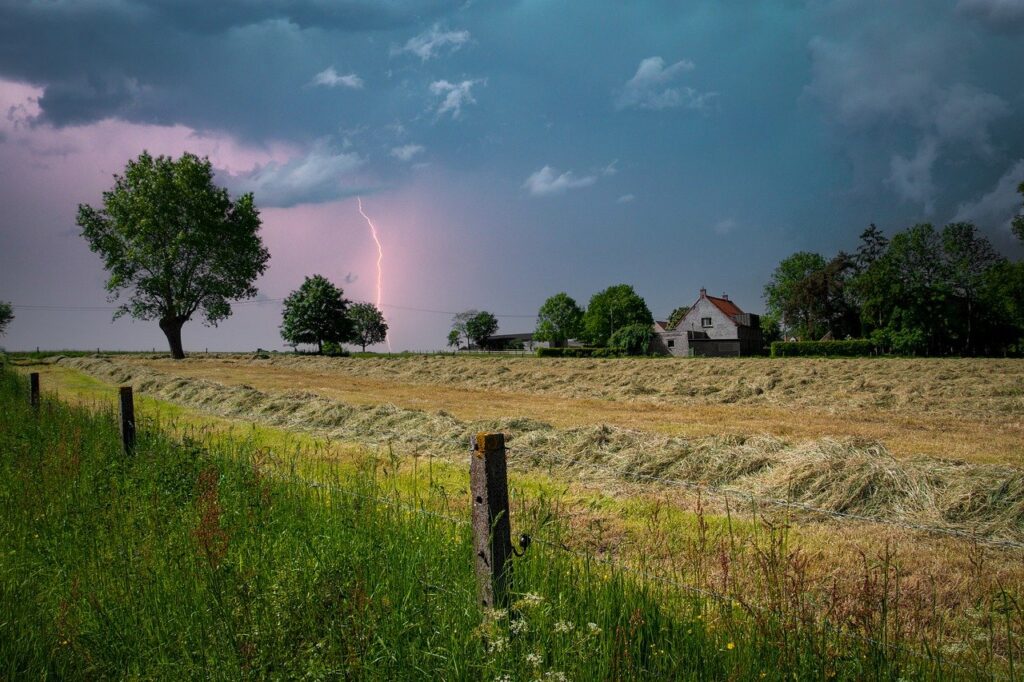A lightning strike is probably the last danger you think of when working on the job site. However, if you are operating a forklift, machine, crane, or any other industrial vehicle outdoors, you are at a much higher risk of being impacted by this occupational hazard.
Lightning is one of the most erratic and unpredictable characteristics of a thunderstorm. Because of this, no one can guarantee an individual or group absolute protection from lightning. However, knowing and following proven lightning safety guidelines can greatly reduce the risk of injury or death.
NOAA – National Weather Service
Each year, there are an estimated 20-30 million cloud-to-ground lightning strikes in the United States. Over the last 30 years, the U.S. has averaged 50 lightning fatalities per year. Nearly every state has had someone die from a lightning strike since records have been kept. Many of those losses occur on the job site.

WHICH WORKERS ARE AT A GREATER RISK?
Anyone who works outdoors during a thunderstorm is at an increased risk of being struck by lightning. However, workers in these occupations face the greatest risk.
- Logging
- Heavy equipment operators (forklift, crane, drilling)
- Plumbing
- Construction and building maintenance
- Roofers
- Farming and field labor
- Power and telecommunications install and repair
- Recreation (lifeguards, golf employees)
TOP TIPS TO AVOID BEING STRUCK
MONITOR THE FORECAST CLOSELY and don’t start anything that can’t be stopped quickly. Pay attention to early signs of storms including darkening clouds, increasing wind, and distant lightning or thunder.
FOLLOW YOUR COMPANY’S WEATHER SAFETY PROGRAM which should be a formal policy that is followed by all employees to avoid lightning and other storm dangers. If your company doesn’t have one, we can assist with creating one. NO PLACE OUTSIDE IS SAFE! If you hear thunder, you must get indoors immediately.
WHICH OBJECTS TO AVOID DURING A STORM
- Tall objects, scaffolding, rooftops, and ladders
- Large equipment such as cranes, backhoes, tractors, and bulldozers (just a few suggestions)
- Materials and surfaces that conduct electricity such as scaffolding, metal objects, plumbing, and power lines
- Leave areas with explosives
Severe Brainstorm conducts weather training and severe weather planning for your team so there’s no questioning what to do during active weather. Contact us for an introductory virtual meeting.

